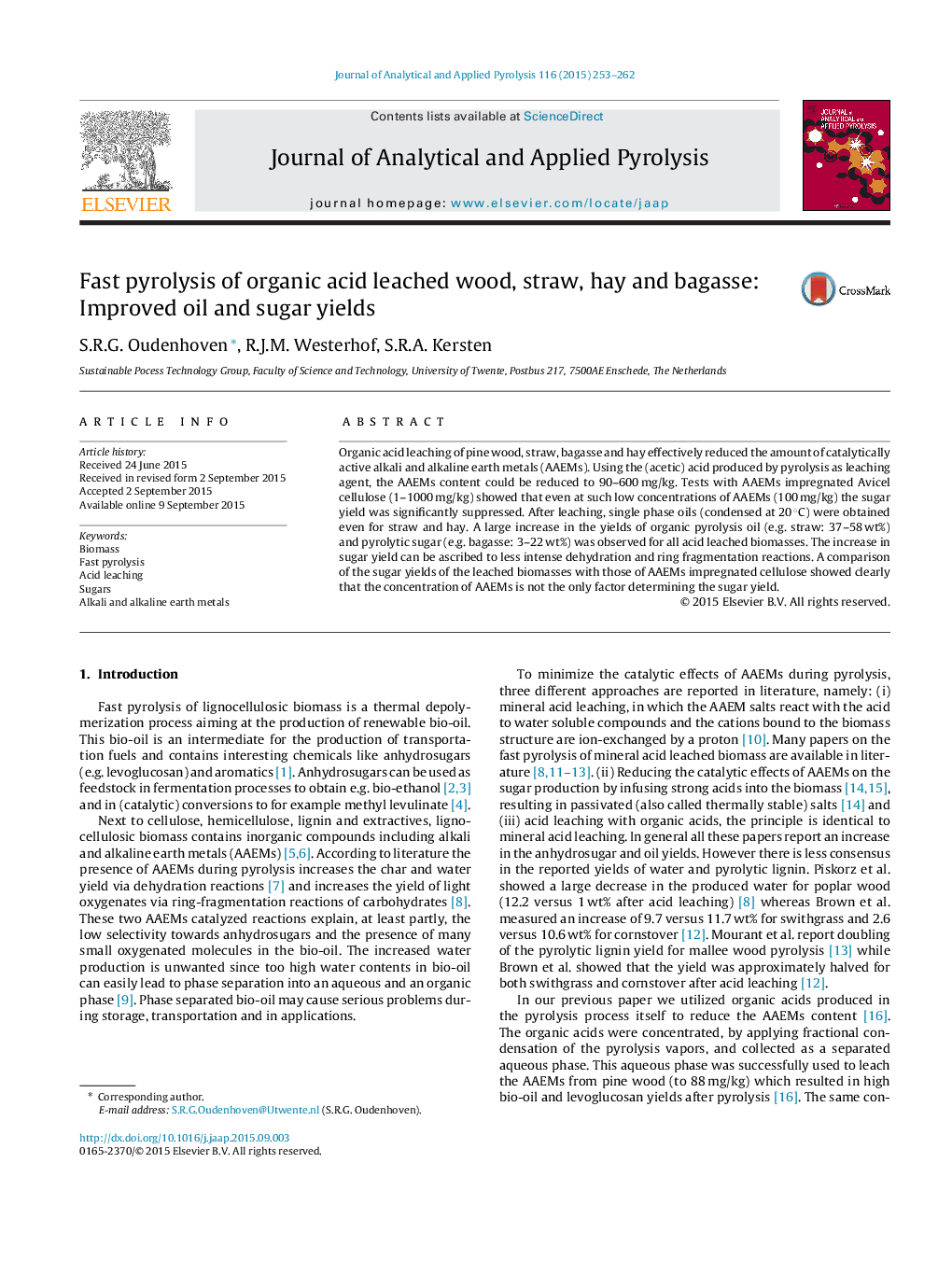| Article ID | Journal | Published Year | Pages | File Type |
|---|---|---|---|---|
| 1197024 | Journal of Analytical and Applied Pyrolysis | 2015 | 10 Pages |
•Pyrolytic acid leaching of pine, straw, hay and bagasse reduced AAEMs to 90–600 mg/kg.•These low amounts of AAEMs still significantly suppressed the sugar yield.•After leaching, single phase oils and largely increased organic oil and sugar yield.•The sugar yield from acid leached biomass is not solely determined by the AAEMs.•A large increase in organic oil yield (e.g. straw 37–58 wt%) after acid leaching.
Organic acid leaching of pine wood, straw, bagasse and hay effectively reduced the amount of catalytically active alkali and alkaline earth metals (AAEMs). Using the (acetic) acid produced by pyrolysis as leaching agent, the AAEMs content could be reduced to 90–600 mg/kg. Tests with AAEMs impregnated Avicel cellulose (1–1000 mg/kg) showed that even at such low concentrations of AAEMs (100 mg/kg) the sugar yield was significantly suppressed. After leaching, single phase oils (condensed at 20 °C) were obtained even for straw and hay. A large increase in the yields of organic pyrolysis oil (e.g. straw: 37–58 wt%) and pyrolytic sugar (e.g. bagasse: 3–22 wt%) was observed for all acid leached biomasses. The increase in sugar yield can be ascribed to less intense dehydration and ring fragmentation reactions. A comparison of the sugar yields of the leached biomasses with those of AAEMs impregnated cellulose showed clearly that the concentration of AAEMs is not the only factor determining the sugar yield.
